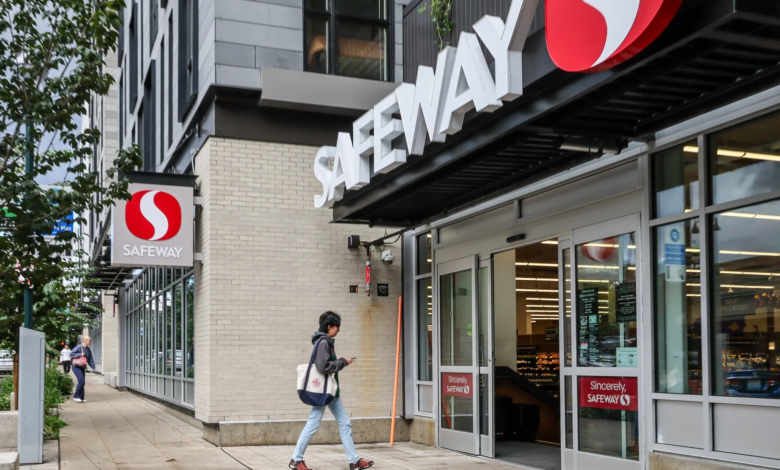Navigating the Aisles of Change: The Kroger Albertsons Merger

In the constantly evolving landscape of the grocery industry, the proposed merger between Kroger and Albertsons stands as a significant milestone, heralding a transformative shift not only for these corporations but for the entire market and its consumers. This comprehensive analysis delves into the multifaceted dimensions of the Kroger Albertsons merger, examining its implications, the challenges it faces, and the potential outcomes it heralds for stakeholders.
The Genesis of the Merger
The story of the Kroger Albertsons merger begins in the context of an increasingly competitive and rapidly changing grocery industry. Faced with the rising challenges from e-commerce giants, the proliferation of discount grocers, and changing consumer preferences, traditional grocery chains have sought ways to enhance their market share, operational efficiency, and customer experience.
Kroger, one of the largest supermarket chains in the United States, has a storied history dating back to its founding in 1883. With a footprint that spans numerous states and a variety of store formats, Kroger has established itself as a dominant player in the grocery sector. Albertsons, on the other hand, boasts a similarly extensive and diversified presence, having grown through a series of strategic acquisitions and expansions since its inception in 1939.
The merger proposal between these two giants is not just a response to external pressures but a strategic move aimed at creating a behemoth that could leverage economies of scale, enhance bargaining power with suppliers, and invest more aggressively in technology and innovation.
Strategic Implications of the Merger
At its core, the Kroger Albertsons merger is a strategic play with far-reaching implications. By consolidating their operations, the merged entity is expected to achieve significant cost synergies, streamline supply chain logistics, and offer a broader product range at competitive prices. Furthermore, the merger is poised to accelerate the adoption of e-commerce solutions and digital technologies, enabling the new conglomerate to better cater to the modern consumer’s demands for convenience and personalization.
However, the strategic benefits extend beyond operational efficiencies. The merger also positions the combined entity to be a more formidable competitor against the likes of Walmart, Amazon, and a growing cohort of discount grocers like Aldi and Lidl. In a market where scale matters, the Kroger Albertsons merger could redefine competitive dynamics, potentially leading to improved margins and market share gains.
Regulatory Roadblocks and Market Concerns
Despite the strategic rationale, the Kroger Albertsons merger is not without its challenges. Foremost among these is the regulatory scrutiny it is bound to attract. Antitrust authorities are expected to closely examine the merger’s impact on competition, particularly in regions where Kroger and Albertsons currently hold significant market shares. Concerns about reduced consumer choice, potential price increases, and the impact on suppliers and smaller competitors will be at the forefront of regulatory evaluations.
Moreover, the merger raises questions about its implications for employment. While mergers can lead to more efficient operations, they often also result in job redundancies and store closures, particularly in markets with overlapping store locations. The companies will need to navigate these concerns carefully, balancing operational efficiencies with the potential social and economic impacts on communities and employees.
Consumer Perspectives and Market Evolution
For consumers, the Kroger Albertsons merger could have mixed outcomes. On one hand, the enhanced scale and efficiency of the merged entity could lead to lower prices and a wider array of products and services. Innovations in shopping technology and an improved online shopping experience could also enhance customer convenience and satisfaction.
On the other hand, there are valid concerns about reduced competition leading to less choice and potentially higher prices in the long run, particularly in markets where Kroger and Albertsons are the dominant players. The merger’s impact on product diversity, local brands, and organic offerings is also uncertain, with some fearing a homogenization of product offerings.
Looking Ahead: The Future of Grocery Retail
As the Kroger Albertsons merger progresses through regulatory reviews and operational planning, its ultimate impact remains to be fully seen. What is clear, however, is that the grocery industry is at a pivotal moment. The merger represents not just a consolidation of market power but a strategic adaptation to a rapidly changing consumer landscape.
In the future, the success of the merged entity will depend not just on achieving operational synergies but on its ability to remain agile, innovate, and truly understand and cater to the evolving needs of consumers. From integrating AI and machine learning for personalized shopping experiences to adopting sustainable practices and supporting local communities, the new Kroger Albertsons conglomerate has the opportunity to set new standards in the grocery industry.
In conclusion, the Kroger Albertsons merger is a landmark event with the potential to reshape the grocery industry landscape. While it offers significant strategic benefits and opportunities for innovation, it also presents challenges and concerns that need to be carefully managed. As the merger moves forward, all eyes will be on how it navigates the regulatory landscape, impacts competition, and ultimately, serves the consumer. In a world where change is the only constant, the Kroger Albertsons merger could well be the harbinger of a new era in grocery retail.
Frequently Asked Questions about the Kroger Albertsons Merger
1. What is the Kroger Albertsons merger?
The Kroger Albertsons merger is a proposed deal between Kroger Co. and Albertsons Companies Inc., two of the largest grocery chains in the United States. The merger aims to combine the resources, operations, and strengths of both companies to create a leading grocery retail group with enhanced scale, efficiency, and competitiveness.
2. Why are Kroger and Albertsons merging?
Kroger and Albertsons are merging to better compete in the highly competitive grocery market, which is facing challenges from e-commerce platforms, discount grocers, and changing consumer preferences. The merger is expected to provide operational efficiencies, increased market share, and improved capabilities in technology and innovation.
3. What are the benefits of this merger?
The anticipated benefits include cost savings from operational efficiencies, enhanced competitive positioning against major players like Walmart and Amazon, a broader product range, improved e-commerce and digital capabilities, and potentially lower prices for consumers.




